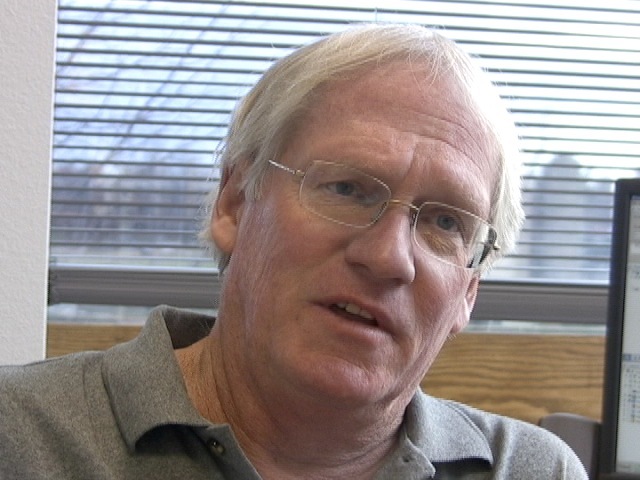Ten Questions about The Paleo Diet with Dr Loren Cordain

Dr. Cordain did an interview answering ten questions about the basics of The Paleo Diet®. We wanted to share his answers with you. We hope you enjoy!
– The Paleo Diet Team
1. What is The Paleo Diet?
The essence of the idea is to emulate the nutritional characteristics of our hunter-gatherer ancestors with contemporary foods and food groups generally found in supermarkets, Sprouts, Whole Foods, etc.
2. Where should Paleo beginner’s start?
I suggest visiting my website and read many of the beginner articles, including What To Eat on a Paleo Diet.
3. Is The Paleo Diet healthy?
Improved health in almost every regard. One of the first parameters people accustomed to eating the typical U.S. diet is improved energy levels throughout the day. Improved blood lipids can occur with days to a week. Sleep is better, particularly when salt and alcohol are reduced. Over the long haul, weight is normalized, and many illness and disease symptoms are ameliorated or improved.
4. What lead you to writing the book “The Paleo Diet“?
I have written a blog post outlining the beginnings of the contemporary Paleo Diet movement and my involvement in it at the early stages before the concept became commonly known.
Here are a few books that inspired me:
Additionally, a number of key early scientific papers were responsible for today’s Paleo Diet notoriety, including:
Scientific papers:
- Shatin R. The transition from food-gathering to food-production in evolution and disease. Vitalstoffe Zivilisationskrankheitein 1967;12:104-107.
- Yudkin, J. Archaeology and the nutritionist. In: The Domestication and Exploitation of Plants and Animals, PJ Ucko, GW Dimbleby (Eds.), Chicago, Aldine Publishing Co, 1969, pp. 547-552.
- Truswell AS. Human Nutritional Problems at Four Stages of Technical Development. Reprint. Queen Elizabeth College (University of London), Inaugural Lecture, May, 1972.
- Abrams, HL. The relevance of Paleolithic diet in determining contemporary nutritional needs. J Applied Nutr 1979;31: 43-59.
- Eaton SB, Konner M. Paleolithic nutrition. A consideration of its nature and current implications. N Engl J Med 1985;312:283-9.
My book “The Paleo Diet” was published in 2002, and I may have coined the term “Paleo Diet”. However, the concept is certainly not mine, but rather came as a result of numerous scientific writers before me.
5. How do you respond to people who say the Paleo Diet is an ‘extreme’ high-protein, low-carb, fad diet?
My colleague Boyd Eaton, who generally is considered to be the father of the contemporary Paleo Diet movement, once said, “If this is a fad diet, then it is humanity’s oldest fad diet, because it is about 2 million years old.”
It is true that The Paleo Diet is a high protein diet compared to the standard American diet, but this is not a bad thing, as higher protein diets have been clinically shown to suppress hunger, increase metabolism and be more effective in reducing body weight than low fat, high carb diets. Additionally in randomized controlled human trials, higher protein improves blood lipids, lowers blood pressure and reduces the risk for the metabolic syndrome.
6. There are several ‘versions’ of the Paleo Diet. Which version is the ‘right’ version?
Any contemporary version of The Paleo Diet which discourages salt consumption is probably pretty close to being accurate. As far as I know, none of the charismatic bloggers or popular Paleo Diet Recipe book authors prohibit added salt. Many advocate regular consumption of honey, dairy, and legumes. These “versions” of the Paleo Diet drift quite far from the original scientists who analyzed the nutritional characteristics of hunter gatherers and determined the range of foods that they consumed, and those in contemporary societies which mimic these foods.
7. How can the Paleo Diet affect your skin?
For people with acne, diets similar to the Paleo Diet (high protein, low glycemic load, free of dairy) have been clinically proven to improve symptoms.
8. What are your thoughts on the Keto Diet?
The ketogenic diet has been with us in one form or another since Dr. Atkins first wrote about it in 1972. For most people to enter a ketogenic metabolic state, they must consistently eat 50 grams of carbohydrate a day. This diet may be helpful in the short term for losing weight or for certain people with epilepsy. By restricting healthful fruits and vegetables, the primary source of carbohydrates in The Paleo Diet, your diet will become net acid producing, rather than net alkaline producing which promotes bone loss and osteoporosis over extended periods.
9. How do you feel about elimination diets such as the Whole30?
I was not familiar with this diet until you mentioned it. From a brief on-line search, I see that it looks remarkably similar to The Paleo Diet, so my initial response would be to be supportive.
10. Is it true that ‘natural sugar,’ like from fruit, affects us differently than refined sugar?
At my website, I have an area showing the sugar concentration of fresh fruits compared to refined sugar products. As you can see, fresh fruits contain considerably less sugar than sweet, processed foods. Additionally, the glycemic (blood glucose) response to most fruits is generally quite low. Very obese or diabetic subjects should reduce consumption of high sugar fruits but shouldn’t restrict low sugar fruits.




